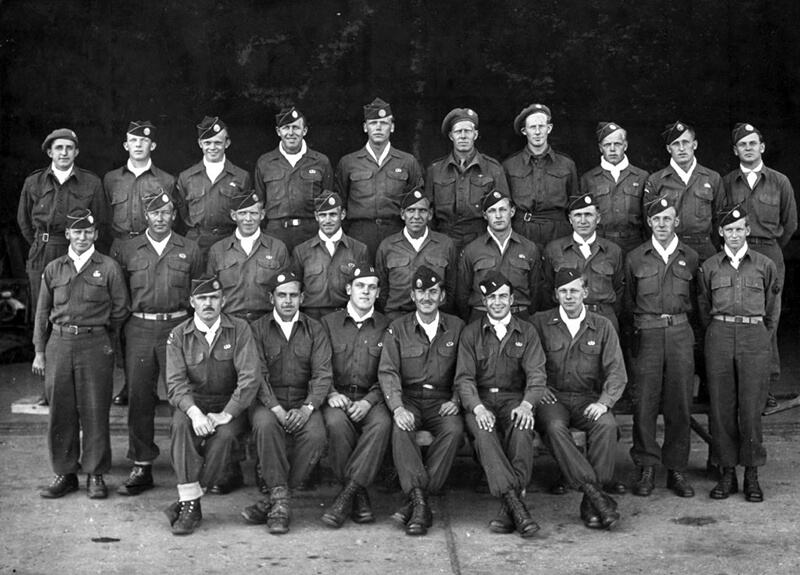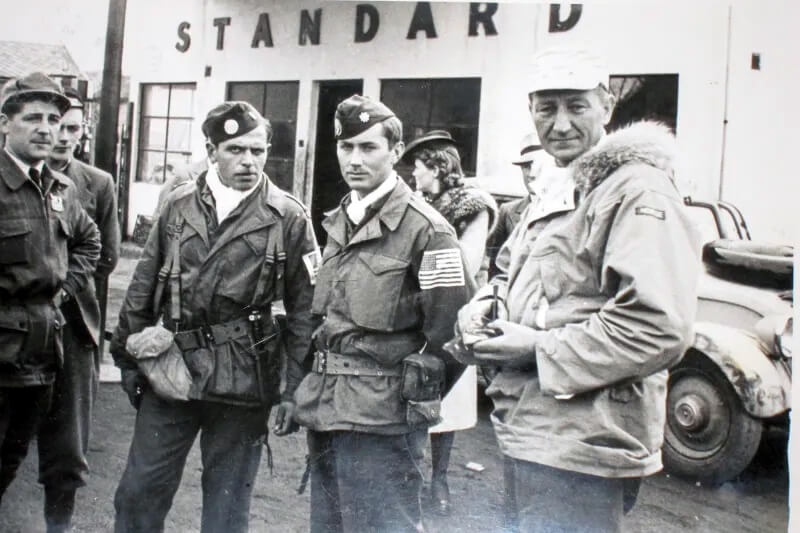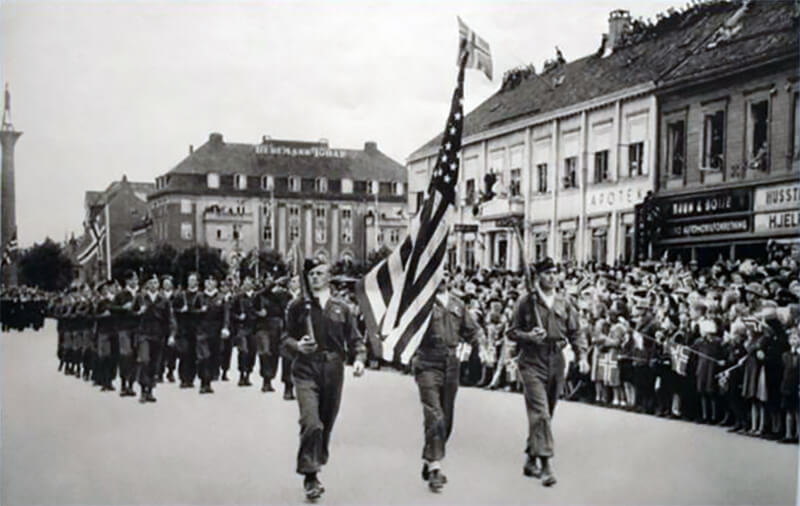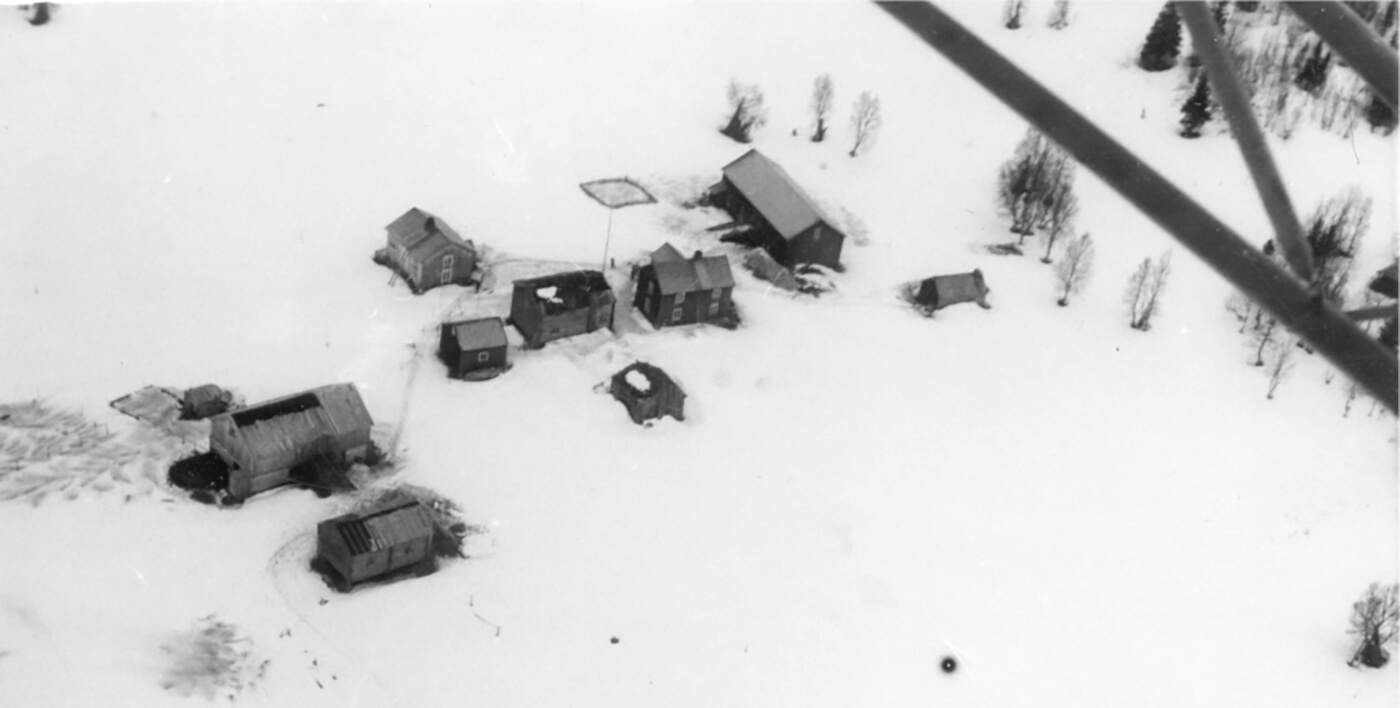| Page Created |
| November 23rd, 2022 |
| Last Updated |
| November 26th, 2022 |
| Country |
 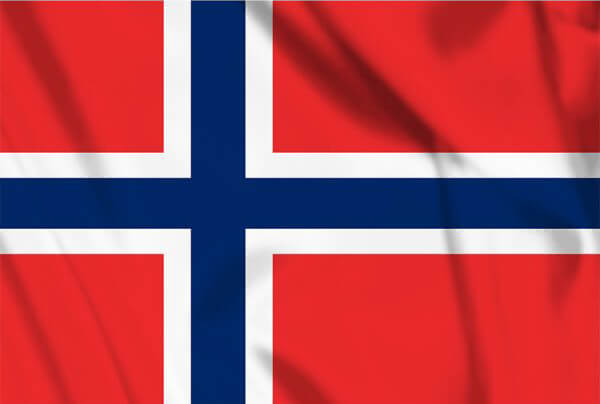 |
| Special Forces |
| 492nd Bombardment Group Operational Groups, Office of Strategic Services Norwegian Independent Company 1 |
| March 24th, 1945 – June 14th, 1944. |
| Operation Rype |
| Objectives |
- Disrupt and destroy the German railway transport in the Snåsa area, Norway.
| Operational Area |
Snåsa area, Norway.
| Unit Force |
- Advanced Party, consisting of four men of the Office of Strategic Services and the Norwegian Independent Company 1
- Norwegian Independent Company 1
- Norso I, Office of Strategic Services, consisting of three officers and about thirty enlisted men under command of Major Major William E. Colby
- Norso II, Office of Strategic Services, consisting of one officer and eighteen enlisted men, under command of 1st Lieutenant Roger W. Halle
- Converted Consolidated B-24 Liberator heavy bombers, 492nd Bombardment Group, United States Air Force
| Opposing Forces |
- 20. Gebirgs-Armee
- 7. Gebirgs-Division
- Armeeabteilung Narvik
- XXXIII. Armeekorps
- 14. Feld-Division (L)
- 702. Infanterie-Division
- 295. Infanterie-Division
- LXX. Armeekorps
- 280. Infanterie-Division
- 274. Infanterie-Division
- Divisionsstab z.b.V. 613
- XXXVI. Gebirgs-Armeekorps
- MG-Ski-Brigade “Finnland”
- Panzer-Brigade “Norwegen”
| Operation |
With the Finnish-Russian Winter War coming to an end in September 1944. The Moscow Armistice, signed on September 19th, 1944, demands that Finland breaks the diplomatic ties with Germany and expels or disarms any German soldiers remaining in Finland after September 15th, 1944.
The Wehrmacht anticipated that turn of events and plans and organises a withdrawal of the 20. Gebirgs-Armee to Germany-occupied Norway, as part of Operation Birke. Despite a failed offensive landing operation by Germany in the Gulf of Finland, the evacuation proceeds peacefully at first. The Finns escalate the situation into warfare on September 28th, 1944, after The Soviet Union pressures to adhere to the terms of the armistice. The Soviet Union requires the Finnish Army to demobilise and to pursue German troops out of Finnish soil. After a series of minor battles, the war comes to an effective end in November 1944, when most of the German troops in Finland reach Norway or its vicinity and take fortified positions. In the event the Armee Norwegen is absorbed by the 20. Gebirgs-Armee on December 18th, assuming the responsibility for garrisoning Norway. The commander of the 20. Gebirgs-Armee likewise assumed the role of Wehrmachtbefehlshaber Norwegen. The last German soldiers of the 20. Gebirgs-Armee leave Finland on April 27th, 1945.
The Allied commanders fear that the enormous number of German troops freed from service in Finland will be transferred for service in the defence of Germany. The only available routes available to the Germans for the movement of these men are the roads which are currently closed by snow, the single-track Nordland railway running to a southern terminus at Trondheim and the sea route from Norwegian harbours. The Supreme Headquarters Allied Expeditionary Forces hopes that the Germans can be forced to use the slower and more vulnerable sea route to the south.
Here the Norwegian Special Operational Group comes in. The disruption of the German railway communications fell within the purview of Lieutenant Colonel Hans H. Skabo, the section chief of the Norwegian Special Operations (NORSO). Plans are made and Major William E. Colby is appointed to command the Norwegian Special Operational Group selected for this task.
Major Colby divides his group into two units. The main unit of three officers and about thirty enlisted men would be under Colby’s direct command and is designated as Norso I, and the second unit consisting of one officer and eighteen enlisted men, commanded by 1st Lieutenant Roger W. Hall and is designated as Norso II. The latter is to be the reserve or reinforcement unit for Norso I or available for a separate mission.
The Nordland railway had been the previous object of study to find the best targets in the region of Steinkjer to Grong. Arrangements are made for the local resistance organisation to provide a reception party of Norwegian personnel, despatched from Stockholm in neutral Sweden, to receive an advanced party of the Norso I team. The team will be parachuted into Norway. It is planned that this advanced party will jump into the target area during the light moon period at the end of January. The main body of the assault force will follow during the next moon period, onto a drop zone selected by the advanced party.
The advanced party consists of Lieutenant Tom Sather, Technical Sergeant Borge Langeland, Staff Sergeant. Arne Listeid, and the Norwegian liaison officer, Herbert Helgesen (Codenamed Hoel). The arrival of a period of adverse weather means that the mission of the advanced party is postponed until the next moon period.
March 2nd, 1944. The advance party’s aeroplane takes off but finds that heavy weather is completely obscuring the intended drop zone, and therefore returns to its airfield in Scotland.
Because of these delays and the continuous German troop movements due of the withdrawal from Finland in the delay period, the selected target now must change. The planners select the Grana bridge as the new objective of the assault party. Secondary objectives are any target of opportunity which can be found for additional rail demolitions along that line. The advanced party and the main body are then scheduled for deployment, just one day apart, during the next moon period.
March 23rd, 1944. One Consolidated B-24 Liberator heavy bomber adapted as transport aircraft brings in the 4-men advanced party.
March 24th, 1944. Eight Consolidated B-24 Liberator heavy bombers adapted as transport aircraft fly the assault force into the target area. A combination of navigational errors, mechanical problems on two of the aircraft, and difficult weather conditions over the drop zone then meant that only four of the aircraft made successful drops. Only 16 Americans and one Norwegian of the thirty-four men originally assigned to Operation Rype are actually deployed. One aircraft drops it men and their supplies in Sweden where the Swedish police arrest them.
Knowing that that earliest time in which his group can be reinforced was the next light moon period. The first tasks of the 16-man group are the creation of a base of operations and the establishment of links with local Norwegian contacts. A Norwegian military officer, one of the members of the advanced party, expresses the desire to remain with the group and to use his ability and credentials to handle future shipments through the Swedish system across the border. The operation established a base and headquarters at Gjefsjø Fjellgård by Lake Gjevsjøen. Where they contact headquarters and ask for further reinforcements. In the weeks to follow sixteen reinforcement sorties are made. Most of them fail due to the harsh weather conditions.
March 29th, 1944. Six converted Consolidated B-24 Liberator heavy bombers leave Harrington Airbase with supplies and reinforcements for Operation Rype. The dropzone is situated at Lake Gjevsjøen in Snåsa, close to the Swedish border.
March 30th, 1944. Due to harsh weather in Norway the aircraft never found the drop site, and after circling the area for a while, the pilot decides to make a U-turn with a full load. On their way back, the converted Consolidated B-24 Liberator heavy bomber, Army 331, gets into real problems. Firstly, the plane ends up on the wrong course, and must adjust its course along the way, and secondly, they are met by an unexpected amount of headwind and problems with icing. The heavily loaden aircraft begins to run out of fuel after a while, and the pilot, 2nd Lieutenant Henry L. Polansky, releases the supplies over the North Sea to lighten the load. Despite this, two of the four engines stop working within a few minutes, and an emergency message is sent by co-pilot 1st Lieutenant Peter C. Pulrang as the aircraft approaches the Orkney Islands, Scotland. Since there was radio silence, the distress call from Army 331 is never answered.
At this moment, Polanski decides to make an emergency landing at Hatston airfield just outside Kirkwall. Even though Hatston airfield is blacked out, the pilot still tries to find the landing strip. Before the emergency landing, the aircrew and men aboard are ordered to parachute out, but according to the log, it comes too late. Thinking he is going to make it to the airport, the message to jump comes too late. Even though, all the men aboard are trained paratroopers, only two men manage to leave the aircraft in time. One dies when his parachute does not open at low altitude, the other one, co-pilot 1st Lieutenant Pulrang survives with minor injuries and a broken ankle.
The plane crashed and burst into flames a few minutes before the gray light and only one and a half kilometers from the airfield. According to the accident report, one of the wings caught a telephone pole, spun around, and caught fire. Thirteen of the fourteen men on board die. The Norso men that are killed are Technical Sergeant Trgve Berge, Technical Corporal Gjerulf Ottersland, Technical Corporal Edward Kjelness, Technical Corporal Eddie O. Sondeno, Technical Corporal Johannes Rorvick and Technical Corporal Leif E.Meland. The killed aircrew are Pilot 2nd Lieutenant Henry L. Polansky, Bomber 2nd Lieutenant Fred Smikle, Hub 2nd Lieutenant Charles J. Allessio, Radio technician Staff Sergeant William E. Lewis, Engineer Sergeant Kenneth W. Stevens, Gunner Sergeant Edward W. Kussman and Tail Gunner Sergeant Eugene J. Graf.
April 6th, 1944. A last attempt is made to reinforce the Assault Force with extra personnel and equipment. A converted Consolidated B-24 Liberator heavy bomber leaves for Norway with these reinforcements.
April 7th, 1944. The Consolidated B-24 Liberator crashes on the mountain Plukkutjønnfjellet, killing everybody onboard.
After this event, headquarters abandons further reinforcement missions. The Norwegian officer, Herbert Helgesen, who has joined the group in Scotland and parachuted with them into Norway soon finds local friends who are ready to join the ranks of the unit, and these men prove to be invaluable throughout the operation. The owner of the farm at Gjevsjøen, the operational base of the assault group, evacuates his family to Sweden to facilitate the OSS group’s use of his farm, and he himself join the group.
April 9th, 1944. The assault group, now including five Norwegians (one of them a local with excellent knowledge of the area’s geography), departs to the Tangen railway bridge targets some twenty-five kilometres south of Snåsa. They cross of local mountains on foot and ski. Under harsh conditions, the group needs four days to reach its first objective. Reconnaissance has shown that most of the area’s tunnels and bridges are guarded. However, the Tangen bridge is not guarded and only visited by frequent patrols, making it a sensible objective.
April 15th, 1944. At about 06.30 the assault group blows the bridge and withdraws unopposed. Later they learn that three separate German patrols were searching for them.
Now swollen to twenty-five men by the arrival of more men from the Great Britain via Sweden,
April 23rd, 1944. The assault unit leaves to strike at the railway in the valley Lurudalen, north of Snåsa. Divided into eight teams, they execute a co-ordinated demolition plan which destroys 2.5 kilometres of track and inflicts considerable delays on the German movement of troops. They cover their way back with boobytraps to prevent German patrols from following them.
April 26th, 1945. The assault force returns to the Gjefsjøen mountain farm after completing their second mission. That very same day the young Sami reindeer herder Bengt Jåma finds the remains of the crashed Consolidated Liberator. He passed over a ridge below the summit and saw what looked like glittering rocks far up. Jåma thought it was lumps of ice and tied up his dog before going closer to investigate. It turned out to be twisted aluminium that shone in the sun. Around the burned-out wreckage, he saw the remains of at least four people scattered everywhere. Bengt Jåma goes straight to Gjefsjøen to notify headquarters. However, since they had just returned, it is decided to rest before sending a patrol to investigate.
April 27th, 1945. A patrol under command of Major William E. Colby is sent up from Gjefsjøen Headquarters to investigate what Bengt Jåma has found. From the initial investigation, they assume the aircraft was heading west when it crashed and bounced down the slope. From the condition of the aircraft and the bodies, they also assume that they had all died instantly. The aircraft is scattered in hundreds of pieces. Containers are broken open and their contents are found strewn about. All bodies, but four of the aircrew, which are found can be identified by their dog tags. Several men of the casualties are close friends of those in the patrol. The casualties are buried and a Memorial ceremony with salute is held. Pictures are taken during this event. The Norso men that died in the crash are,1st Lieutenant Blaine E. Jones, Staff Sergeant Robert N. Anderson, Corporal Knut J. Falck, Technical Corporal Bernard N. Iverson. The aircrew who died in the event are Pilot 1st Lt. William H. Hudson, Co-pilot 1st Lieutenant Leon G. Dibble Jr., Bombadier, 2nd Lieutenant Richard A. Bosch, Navigator Flight Officer Arthur H. Barbknecht, Radio Operator Sergeant Gilbert L. Magruder, Gunner Sergeant Fayette Shelledy, Gunner Sergeant Jack H. Spyker and Engineer Sergeant Angelo Santini Forward Observer.
When returning at headquarters they decide that snow conditions are now becoming unfavourable for the execution of more long-range operations. Therefor they decide to remain in concealment, especially as it has become clear that the Germans are undertaking a major search effort to find them.
May 2nd, 1945. A five-man German patrol comes into the farm and holds staff Sergeant Marinus D. Myrland at gun point. According to the official version, a nervous German fires one shot while a US surrender is being discussed after which a firefight erupts. During this skirmish all the Germans are killed and one of the group’s Norwegian auxiliaries is wounded. Other versions say the Germans surrender and are later executed. It is not clear what really happened here. What is, is that the Norwegian auxiliary is being treated by the group’s medical attendant, after which the man is prepared for transport to Sweden by sled for further care.
When word came through of the German surrender, the group is ordered to stand by for the receipt of further orders.
May 11th, 1944. The assault group is ordered to move to Steinkjer.
May 18th, 1944. Under the temporarily command of a senior officer despatched from Great Britain, the assault group is ordered to travel to Namsos. Here they help in disarming some 10,000 Germans.
May 29th, 1944. The assault group moves by coastal steamer to Værnes near Trondheim, where it links up with the men of Norso II under command of Lieutenant Hall. The Norso II group is flown in to perform a policing and protective role to assist in the German surrender at the airfield.
June 9th, 1944. The whole group provides an honour guard for Crown Prince Olaf of Norway during his arrival at Værnes.
June 10th, 1944. The group takes part in a parade in honour of Crown Prince Olaf of Norway in Trondheim.
June 14th, 1944. The combined groups are ordered to return to Great Britain and get ready for transport to the United States.
| Multimedia |
| Operation Rype on patrol |
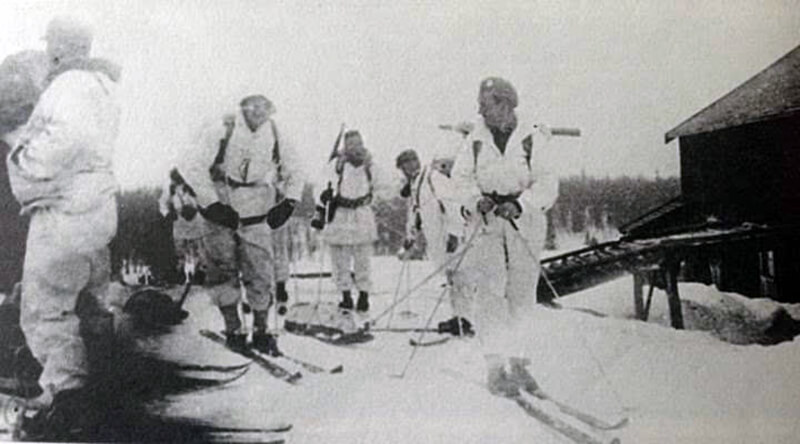
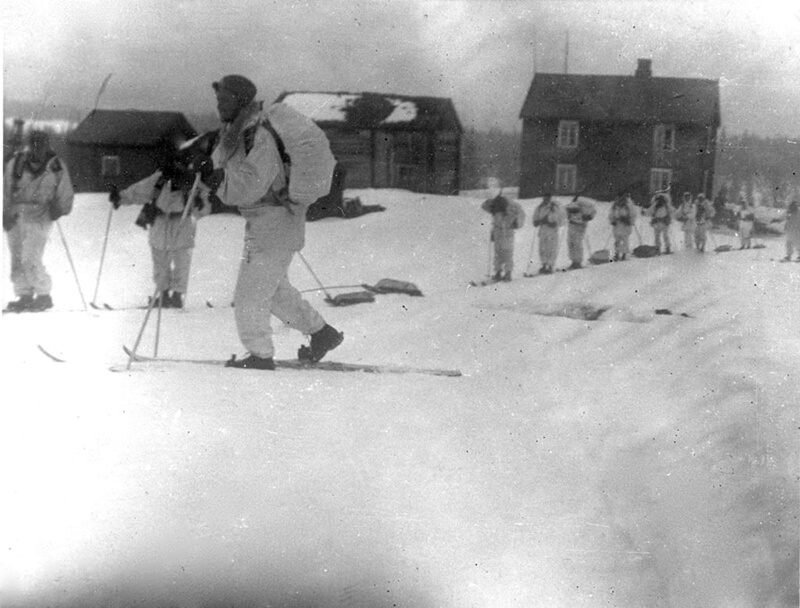
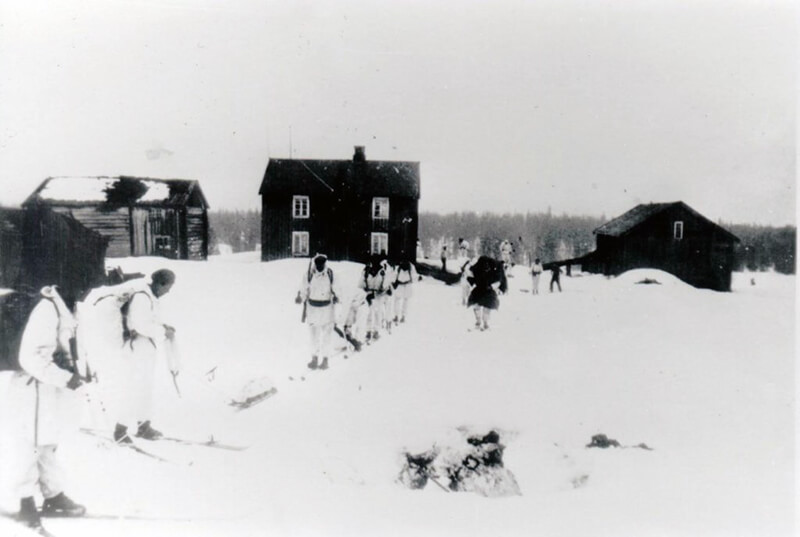

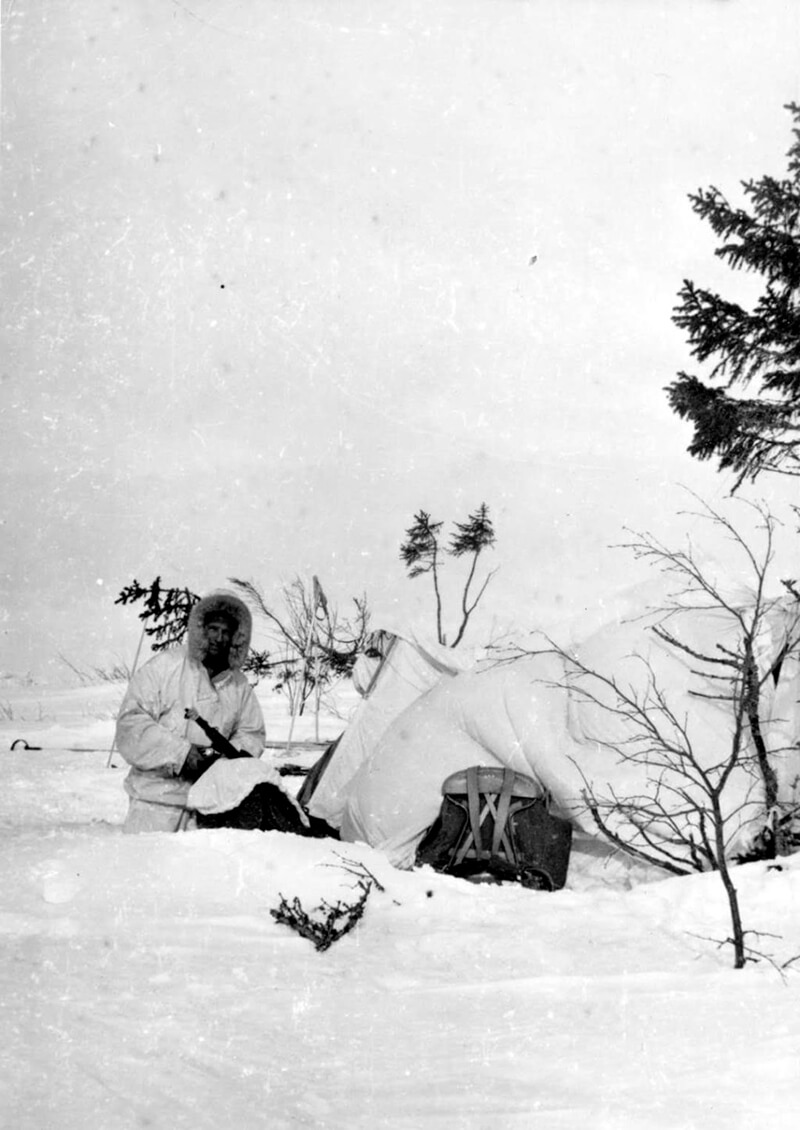
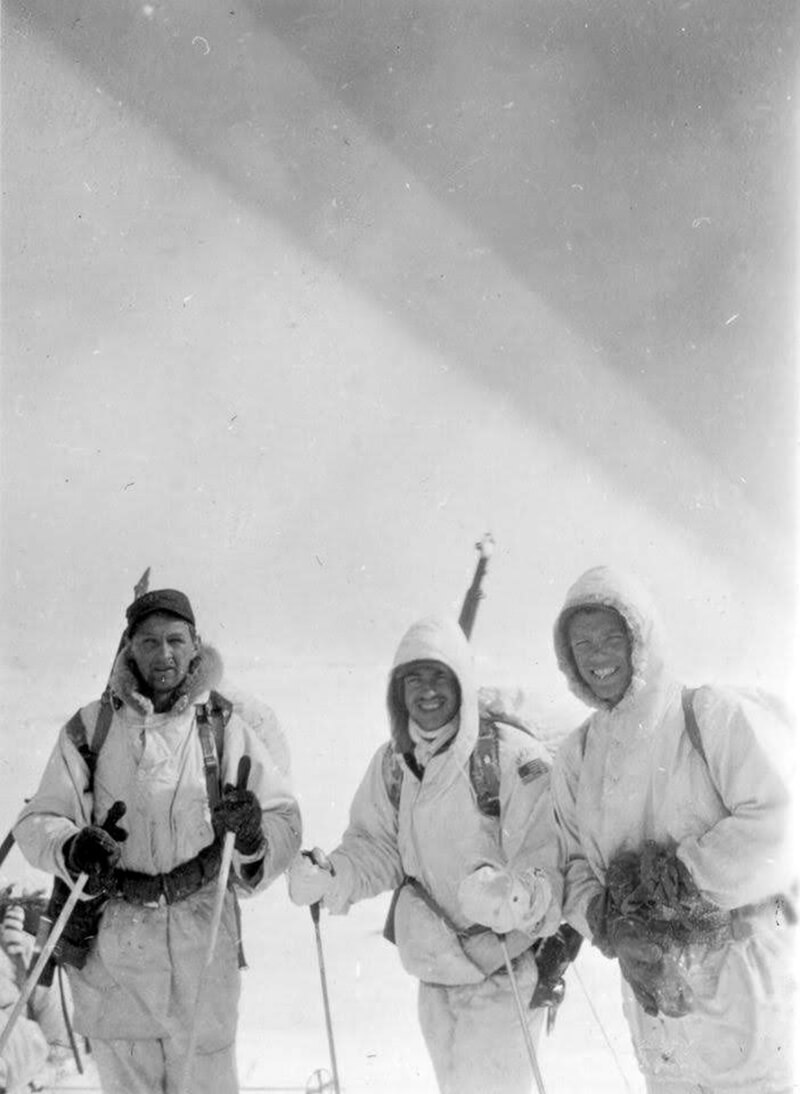
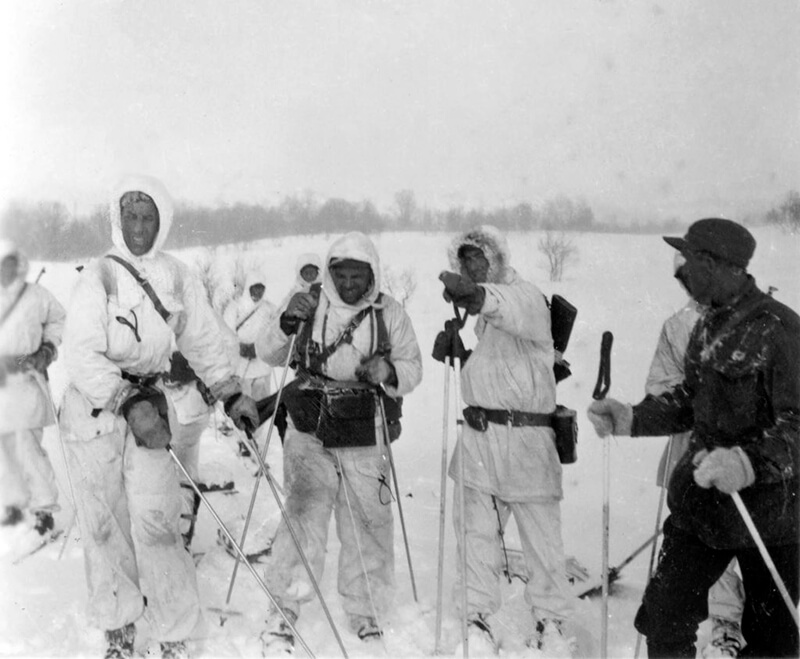
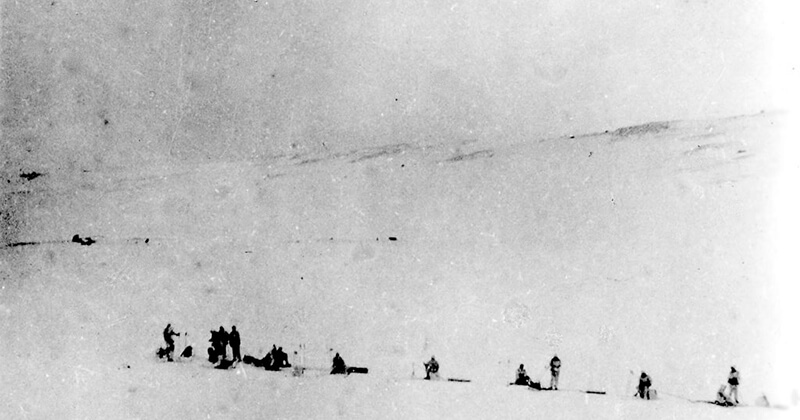
| Operational Maps of Operation Rype |
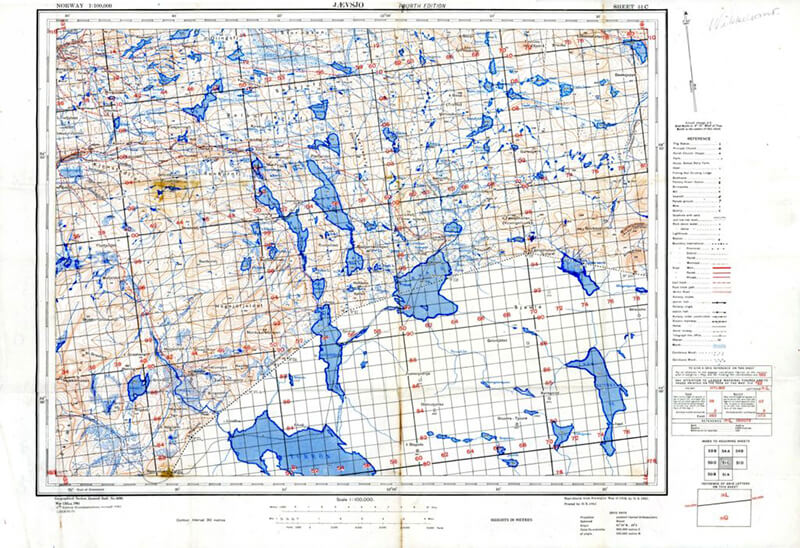
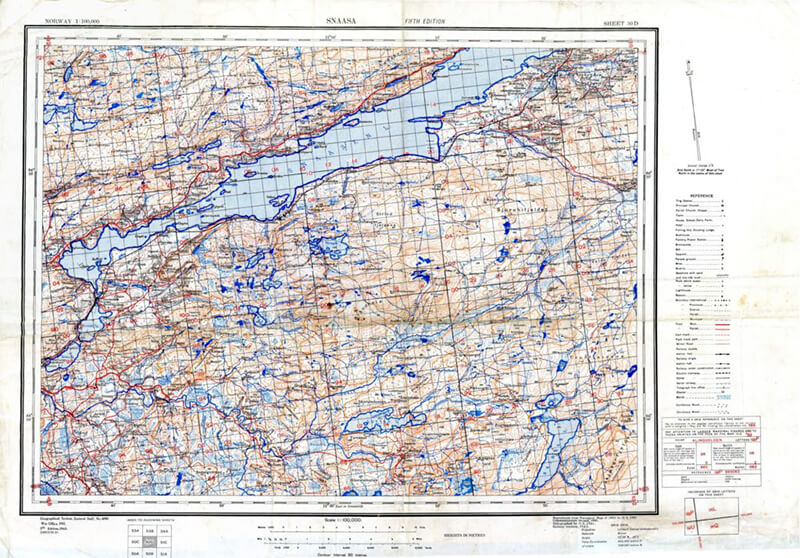
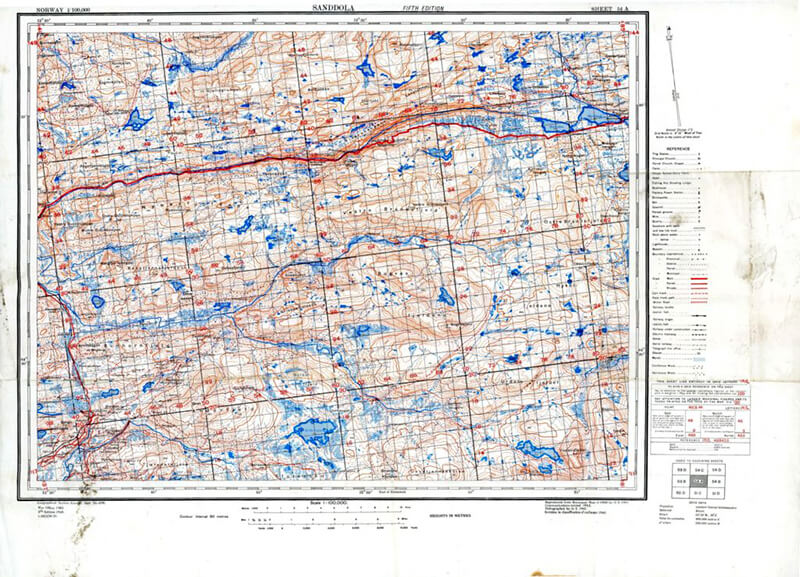
| Gjefsjø Fjellgård by Lake Gjevsjøen |
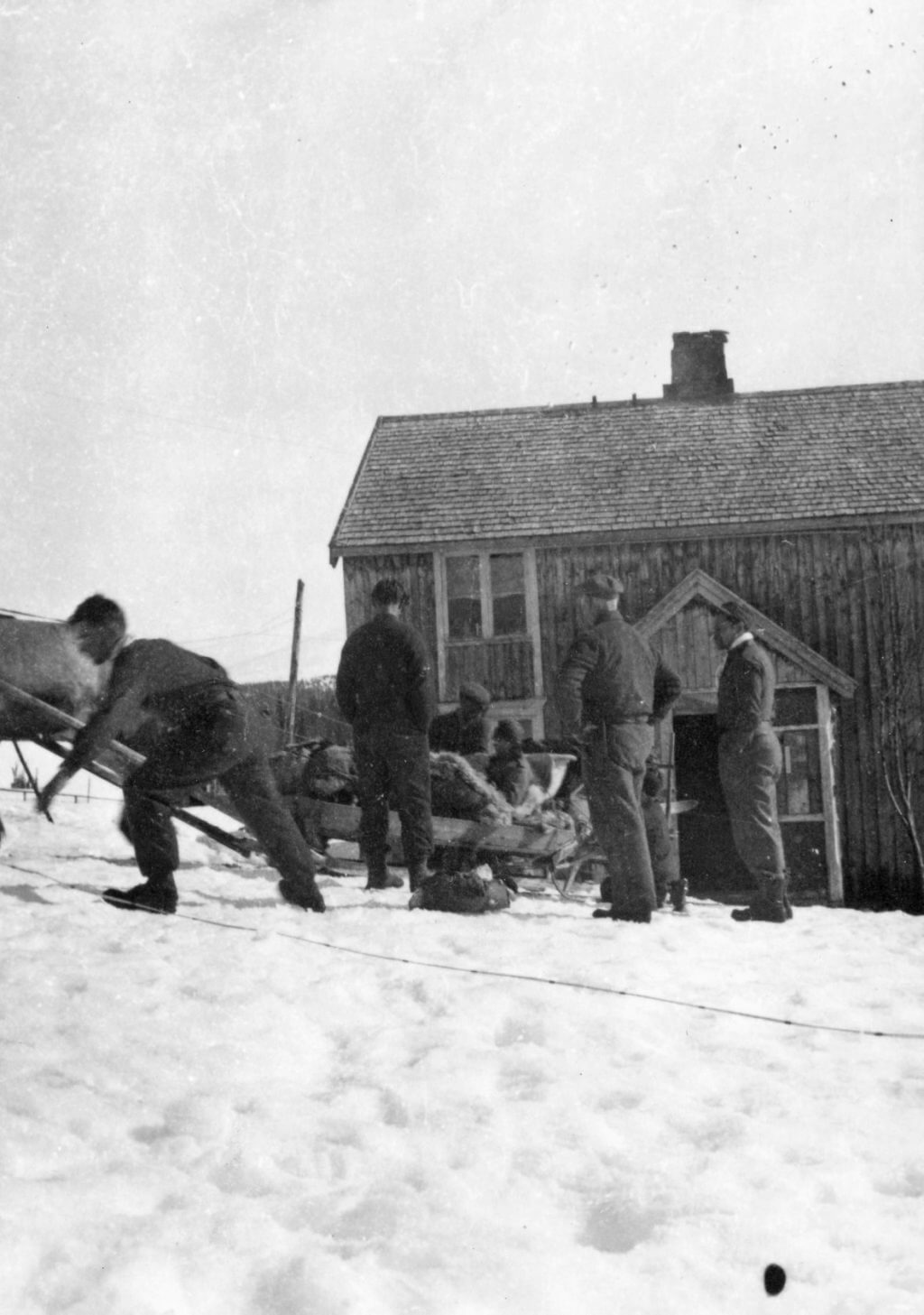
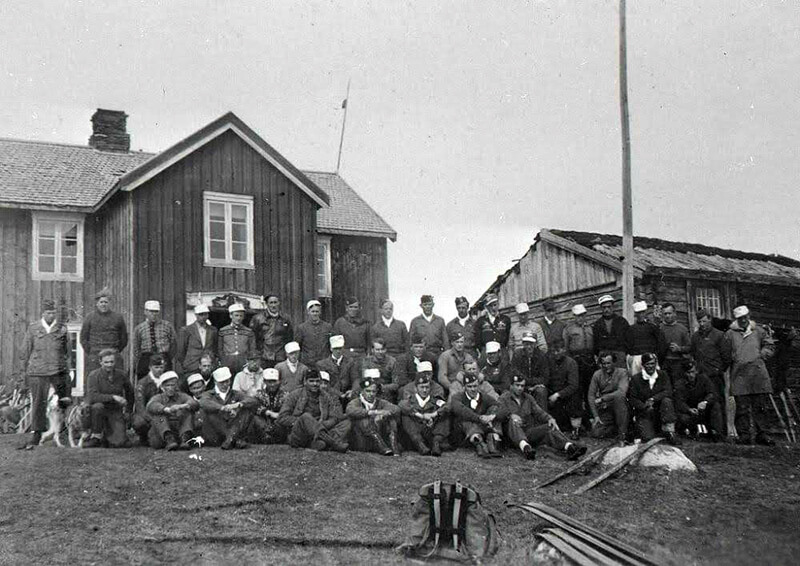
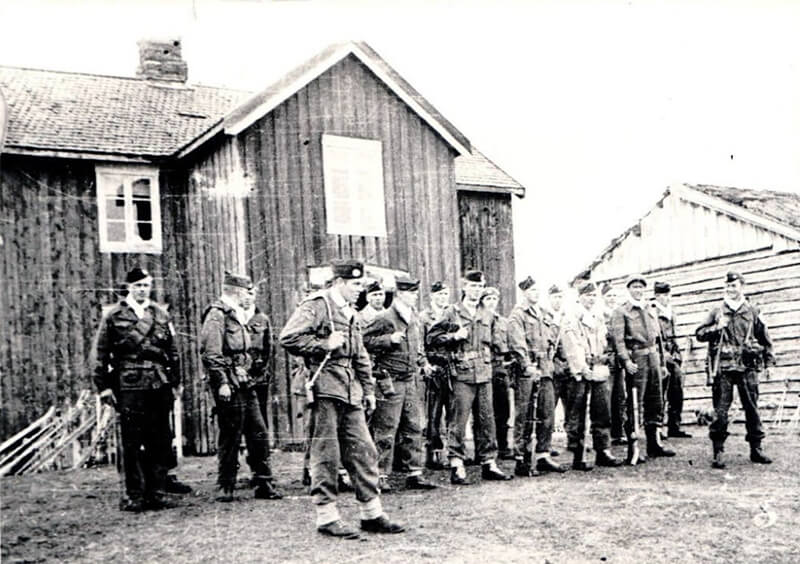
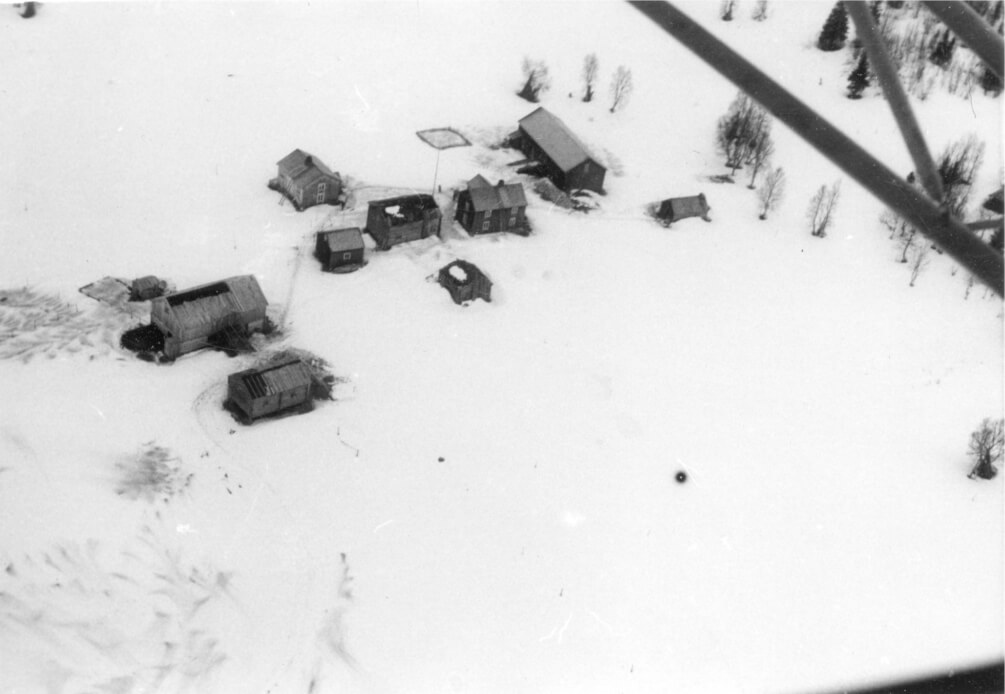
| Reinforcement aircraft crash at Mount Plukkutjønnfjellet |

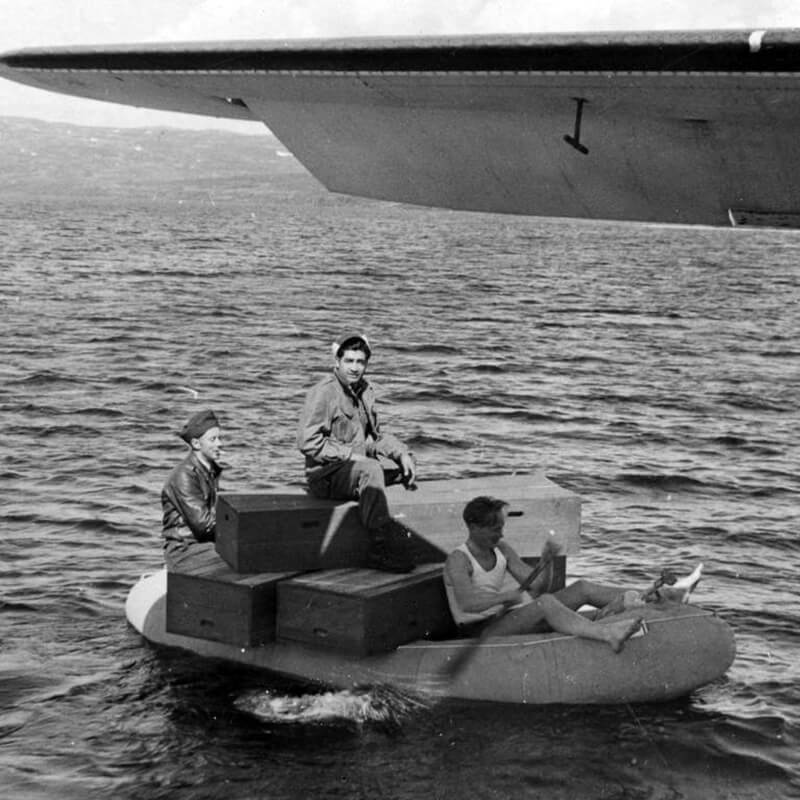
| Norso in Trondheim |
